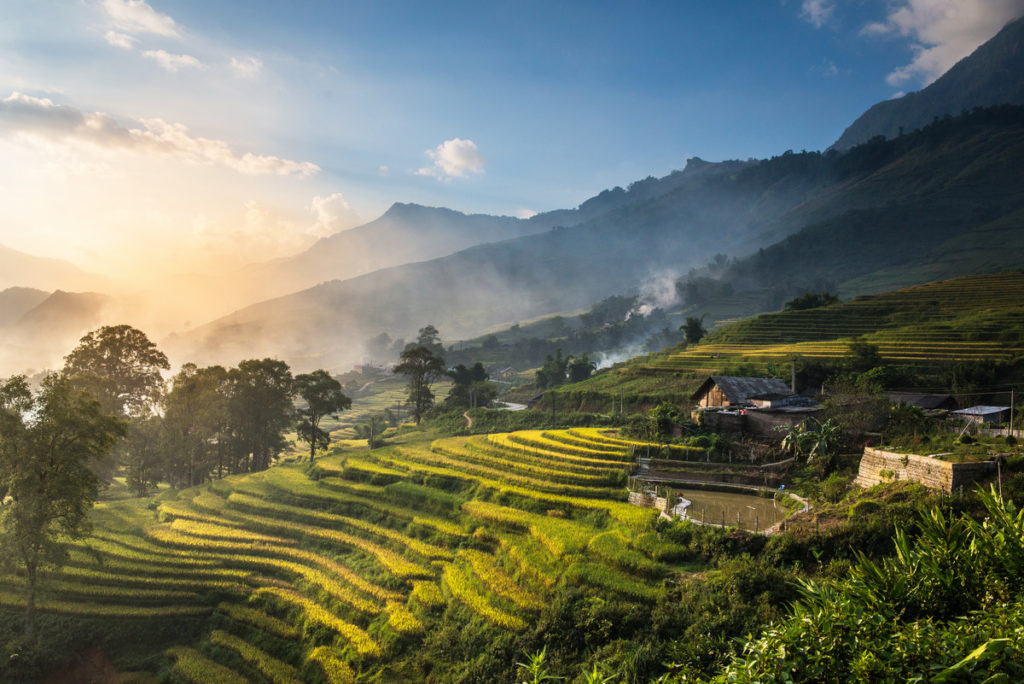Welcome back to VNAround (vnaround.com) – more than a blog, we’re your Viet guide to unraveling Vietnam’s history and culture. You might have noticed that Vietnam is commonly divided into three regions: North, Central, and South. But why is this the case? Let’s explore the historical, geographical, and cultural reasons behind this division.
1. The Geographical Divide
Natural Boundaries
Vietnam’s geography naturally separates the country into three distinct regions:
- North: Dominated by mountains, the Red River Delta, and cooler climates.
- Central: Marked by the Truong Son Mountain Range and narrow coastal plains.
- South: Characterized by the Mekong Delta and tropical lowlands.
These natural boundaries influenced settlement patterns, agricultural practices, and trade routes, which in turn shaped distinct regional identities.
2. Historical Roots of Division
Early Kingdoms
In ancient times, Vietnam was home to different kingdoms:
- North: The Red River Delta was the cradle of Vietnamese civilization, starting with the Hung Kings and later dominated by Chinese rule.
- Central: The Champa Kingdom (2nd–15th century) flourished in this region, known for its Hindu temples and maritime trade.
- South: Originally part of the Khmer Empire, this area came under Vietnamese control in the 17th century through southward expansion (Nam Tien).
Colonial Influence
During the French colonial period (1887–1954), Vietnam was divided into three administrative zones:
- Tonkin (North)
- Annam (Central)
- Cochinchina (South)
This administrative division reinforced regional differences and played a significant role in shaping modern Vietnam.
3. Cultural Differences Between the Regions
North Vietnam – Tradition and History
- Known as the cultural and political heart of Vietnam.
- Home to ancient capitals like Hanoi and historical sites such as the Temple of Literature.
- Cuisine is subtle and balanced, focusing on natural flavors like Pho.
Central Vietnam – Heritage and Resilience
- Rich in historical landmarks, such as Hue’s Imperial City and Hoi An’s ancient town.
- Cuisine is bold and spicy, with dishes like Bun Bo Hue and Mi Quang.
- Known for its resilience, as the region endured many natural disasters and wars.
South Vietnam – Innovation and Openness
- The economic hub, centered around Ho Chi Minh City.
- Cuisine is sweet and flavorful, reflecting influences from the Khmer and Chinese.
- Known for its warm climate and laid-back lifestyle.
4. Vietnam’s Division During the 20th Century
Partition After World War II
Following Japan’s defeat in World War II, Vietnam was temporarily divided at the 16th parallel, with the North under communist control and the South under anti-communist leadership.
The Vietnam War
The Geneva Accords in 1954 officially divided Vietnam into two states at the 17th parallel:
- North Vietnam: Led by Ho Chi Minh and supported by communist allies.
- South Vietnam: Backed by the United States and Western allies.
This division lasted until 1975, when the North emerged victorious, leading to the reunification of Vietnam.
5. Modern-Day Unity and Regional Pride
One Nation, Diverse Identities
Despite historical divisions, Vietnam is united under one government. However, regional pride remains strong, with each area celebrating its unique traditions, dialects, and cuisines.
Economic Contributions
- The North focuses on political leadership and industrial development.
- The Central region contributes to tourism and heritage preservation.
- The South drives the economy with its thriving business hubs and agriculture.
At VNAround (vnaround.com), we believe that Vietnam’s regional diversity is a source of its strength and charm. Whether you’re exploring the ancient streets of Hanoi, the imperial history of Hue, or the vibrant energy of Ho Chi Minh City, Vietnam’s three regions offer endless opportunities for discovery.
Let us know which region of Vietnam you’d love to explore, and stay tuned to VNAround for more insights into Vietnam’s fascinating history and culture! 🌏


